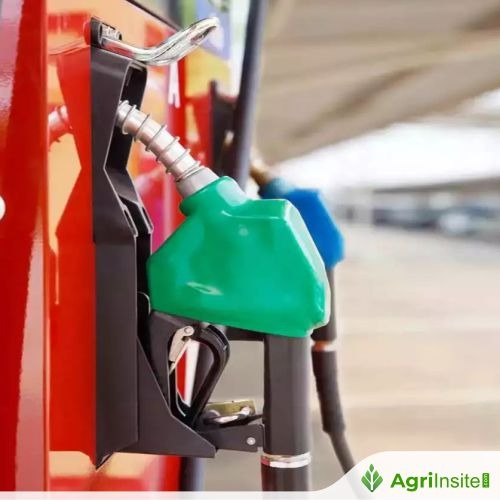Pongamia Pinnata Trees Can Boost Country’s Ethanol Impact And Clean Energy Drive

India’s ethanol blending success—from 10% in 2022 to 19.6% in January—has saved $130B in forex, cut 557L MT CO₂, and boosted rural incomes. Maize-based ethanol offers sustainability and water efficiency. Meanwhile, hybrid fuels from Pongamia oil show promise as diesel alternatives for remote areas, supporting India’s green energy goals and future energy security.
From achieving 10 per cent ethanol blending ahead of schedule in 2022 to reaching a remarkable 19.6 per cent blending in January, India has demonstrated its capability to scale clean energy solutions rapidly.
The ethanol blending initiative has already saved over $130 billion in foreign exchange, substituted nearly 185 lakh metric tonnes of crude oil, and reduced 557 lakh metric tonnes of CO₂ emissions.
Every year, India has a surplus of around 165 lakh metric tonnes of grain that could be used for ethanol.
Ethanol Blending program (EBP) is a great step forward by the GOI to ensure the country’s future energy security, rural development, increasing farmer’s income manifold and reducing carbon footprint in the environment.
In the last two years, grain ethanol industry has grown into the largest contributor to India’s EBP. “Despite, being a grain surplus country, the grain ethanol industry requires timely support from the Union Government, which has to come up with the right policy initiatives and growth directions,” said Abhinav Singal, treasurer of Grain Ethanol Manufacturers Association (GEMA).
The thought leadership report identifies grain-based ethanol, particularly from maize and surplus grains like broken rice, as the key for sustainable expansion. It emphasises the environmental and economic advantages of maize—India’s least water-intensive feedstock with strong ethanol conversion efficiency. The report projects that surplus grain could be utilised to generate over $350 billion annually in direct payments to farmers, thereby reinforcing rural prosperity, while also arresting urban migration.
“India’s ethanol success is a result of bold policy decisions and collaborative industry efforts. The grain-based ethanol industry, in particular, holds immense potential to drive rural economic development, enhance farmer incomes, and ensure year-round ethanol production,” said Sanjay Ganjoo, Director General, IFGE (Indian Federation of Green Energy).
Diminishing fossil fuel reserves, rising market price for diesel and the need to combat greenhouse gas emissions have led to the development of a crucial area of research into alternative fuels for diesel engines.
In this work, a hybrid fuel was prepared for the first time by blending Pongamia oil, hydrated ethanol (95 per cent purity) and butanol (as a surfactant). To eliminate engine modification and reduce injector clogging in the diesel engine, degummed Pongamia oil was utilized for preparing hybrid fuels.
Results show that the density and viscosity of Pongamia oil reduced considerably after blending with ethanol and was brought closer to that of diesel. The gross calorific values were comparable with that of diesel. The brake thermal efficiencies of using hybrid fuels on a compression ignition engine were very similar to that of diesel.
The emission characteristics of hybrid fuels show reduced emissions of CO2, NOx and SO2. The hybrid fuel blends E22B27DPO51 and E17B16DPO67 prepared with degummed Pongamia oil show the lowest emissions.
Thus, these hybrid fuels have the potential to substitute diesel to run diesel powered inter-island shipping vessels, fishing boats and smaller power plants for household electricity in remote and outer islands of developing countries.
The demand for energy continues to increase due to population growth. In contrast, stocks for fossil fuel–based energy are limited and cannot be replenished, and therefore there is a need to find renewable resources to meet the increasing demand for energy around the world. With the declining reserves of fossil fuels, it has become apparent that biofuels are destined to make a substantial contribution to the future energy demands of the domestic and industrial economies.
The use of vegetable oils from plants such as jatropha curcas, canola, oil palm, and soybean has the potential to provide environmentally acceptable biodiesel, where production is greenhouse gas neutral, with reductions in current engine emissions. However, some of these feedstock like oil palm and canola are costly, making production of biodiesel economically marginal due to their need for nitrogen fertilizer.
In the context of biofuels, legume-derived feedstock that do not compete with other legumes or food crops for land, water, and fertilizer have the potential to provide a sustainable source of liquid fuels with minimal environmental impacts.
A strong candidate legume species for biofuel feedstock is the legume Pongamia pinnata tree. These trees are normally planted along the highways, roads, canals to stop soil erosion.
Billions of trees exist all over India. If the seeds that fall along the road are collected, and oil is extracted at village level expellers, million tonnes of oil will be available for lighting lamps in the rural areas.
It is the best substitute for kerosene. Since these are spread over a large area, collection of seeds for biodiesel manufacture is not viable. Pongamia can be developed as the alternative source of fuel for diesel.
To Read more about Ethanol Industry & Bio Energy News, continue reading Agriinsite.com
Source : Bizz Buzz
















